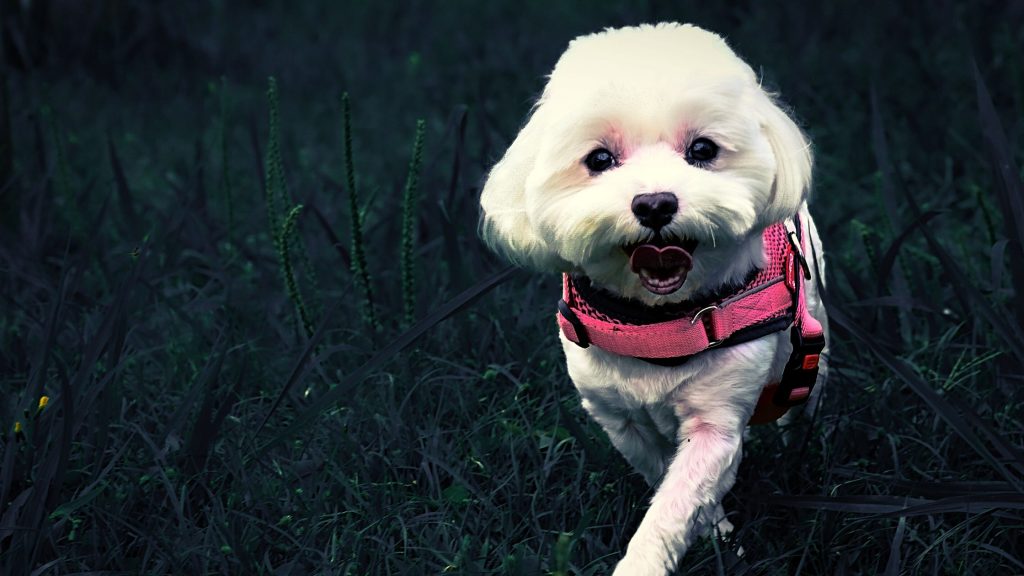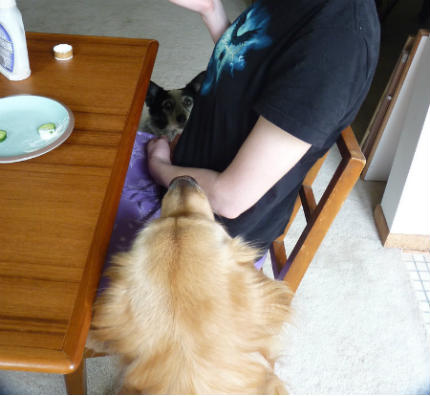The Bichon Frize is one of the best companion dogs that exist , despite which it is not currently among the most popular breeds and it is rare to see them on our streets, which is a shame.
- Weight : between 3 and 7 kilos
- Hair type : long, fine and curly
- Character : affectionate and very sociable
- Health : normal, but with several problems associated with its size and breed
- Life expectancy : between 12 and 14 years
origins
The origins of the bichon dog breed are in Europe and there is a division of opinions among fans, as some say that it is French and others that it is Spanish.
It is known that dogs of the type of this bichon have been around the Mediterranean area for many centuries and that this breed may come from a cross between centuries-old water dogs with white pets.
In the 16th century the breed was known as the Tenerife Bichon , whose name comes from the fact that it was developed on the island, where it arrived at the hands of Spanish sailors starting in the 12th century.
Already in the Renaissance, this Tenerife Bichon was a court dog, being very abundant in Spain and Italy. In fact, the breed appears in several Renaissance paintings and also in those of Goya centuries later.
It did not take long for it to become popular in France, where Marie Antoinette was one of the most famous owners of this Bichon , later falling into oblivion and remaining a stray dog.
When it was on the streets it attracted attention because it was very pretty, so people picked it up, until in 1930 the breeders in France got to work and hence it is said that the Bichon Frize has its origins in this country.
At the end of the Second World War its population was very low, but the breed was able to be saved thanks to the fact that in the 1950s it was taken to the United States, where the American Kennel Club* did excellent work.
Now it is known all over the world, but it is not one of the most popular breeds, although being out of fashion is not always a negative thing.

Main features
In the Bichon Frize dog breed, the first characteristic that stands out is its hair, long and silky in the shape of a ringlet, creating the curls that give the breed an unmistakable appearance.
It is up to 10 cm in length and must always be pure white, as it is the only color currently accepted by the FCI*.
We are dealing with a small dog, less than 30 cm and its weight is very contained . The standard does not say anything about the minimum or maximum weight, but the average is five kilos, not exceeding seven or eight.
The tail is striking, which is raised and folded in a rather funny gesture, which combines very well with the expression on his face. When he looks at us he always seems alert, as if he were waiting for something.
Their look is not coincidental, since they are one of the easiest breeds to train due to the great intelligence they possess.
Character of the Bichon Frize
The Bichon Frize has what we can call an ideal character to be a companion dog.
He is very happy and playful, but he is not nervous like other small dogs, since he is also very affectionate and sensitive towards his owners.
Additionally, even though he is small, he loves to exercise, making him a good dog for people who like to walk or even go on short hiking trails.
When he is at home he is not heavy and he loves to rest on the sofa or in bed with his owners, whom he always looks for in order to have their company, so he is not a dog that can be left alone in a garden. unless you have a canine companion.
They tend to be sociable animals with strangers, dogs and other pets. This makes them ideal for those who have cats, with whom they will get along very well from day one.
The same goes for children. They will play with them without ever showing aggression , which is not always possible in small dogs, many of which are quick to show their teeth if the children in the house tire them out.
Despite their character, it is best to socialize them well from the time they are puppies. This prevents them from being shy when they are adults, which leads to them being aggressive out of fear even towards their owners.

Care
Whether we are going to adopt a dog of this breed or buy it, the first thing we should know is that the hair takes a lot of work and that it tends to form knots , which means that it must be combed every day.
In our hairdressing bag we should always have a soft comb and a card. With the comb we brush it along the hair (so we don't tangle it or break it) while the card will be very good when it comes to removing the knots.
Even though we comb it often, it is best to take it to the hairdresser at least once every three months, where they can bathe it and leave it looking impeccable.
Not only will we dedicate ourselves to combing his hair, but we will have to take him outside a couple of times, preferably three, so that he can exercise. He is not an athlete, but he needs to run, fetch the ball and play with other dogs.
As a companion dog, he adapts very well to small apartments as long as he is accompanied. He does not tolerate loneliness , so if he is going to spend a lot of time alone because we are away from home almost all day, the Bichon Frize is not a breed that we should consider.
Feeding the Bichon Frize
He has normal feeding needs, but you do have to give him quality food for dogs of this size, with a kibble adapted to his mouth, which is made up of very small teeth.
Due to their tendency to gain weight, like most small breed dogs, we can opt for what is called a “grain free” feed, since it will possibly do better than one that contains wheat, rice or corn.
We must be careful with the quantities we give, always paying attention to the manufacturer and the veterinarian, who will be the one to tell us if we are overdoing the ration or falling short, although we can see that with the naked eye.

Health
There are several health problems that the Bichon Frize dog suffers from. Some are specific to the breed, genetic, and others come due to the size it has and are common in breeds like these.
Bladder stones
This disease is always associated with small breed dogs . Because they do not have intense physical activity, they drink little water, so in the end they accumulate stones in the urine that are deposited in the bladder.
They can be eliminated with a specific wet diet as long as they are caught in time, since if the stones have reached the bladder it is best to operate.
Dental problems
The Bichon Frize has crowded teeth, as occurs with other small breeds. There is not much space between the teeth, so infections are common if we do not clean the teeth frequently.
We can also go to the veterinarian, who can carry out a thorough cleaning if necessary (for this the dog must be put to sleep).
Juvenile cataracts
Here we talk about a genetic disease that can lead the dog to lose its sight . Cataracts usually appear in elderly animals, but in this case they are seen in specimens that are not yet adults.
Patellar dislocation
Patellar dislocation causes the kneecap to move out of place, something operable, although an attempt is always made to solve it through less invasive means such as chondroprotectors and rehabilitation.
It is another of the hereditary diseases of the breed, although it can also be caused by a blow or excessive exercise with which care must be taken, especially in juvenile specimens.
When this disease appears, responsible breeders remove them from breeding, as their descendants will almost certainly have this problem.
Idiopathic epilepsy
This type of epilepsy occurs in all breeds and in the Bichon it has a higher incidence than in others.
The origin is not known (hence its name) and it appears when the dog is very young , before the age of three. Luckily, medications have already been developed that help the animal have a very good quality of life.
Other dog breeds that may interest you:
- maltese bichon
- Havanese
- yorkshire
- Pomeranian
- Chihuahua
- miniature pinscher
- dachshund or sausage dog
- Jack Russell Terrier
- Poodle
- Westy
- Pug
- French Bulldog
- Boston Terrier
References:












